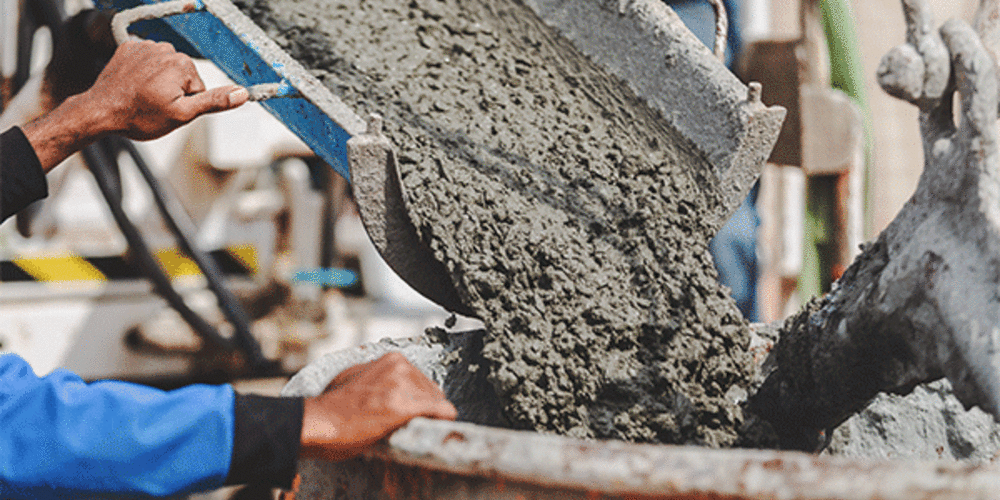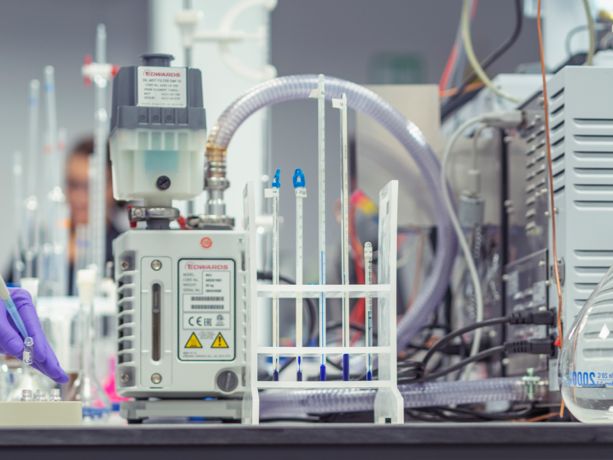Is Carbon Neutral Concrete on the Horizon?

With traditional concrete estimated to be responsible for up to 8% of global CO2 emissions, the race is on to create a carbon-neutral alternative. Scientists at the University of Colorado Boulder could be close to just such a breakthrough thanks to a species of cloudy microalgae. The Lab at Brookes Bell takes a closer look…
The environmental problem with concrete
After water, concrete is the most widely used material on the planet. Seriously. In a single day, enough concrete is produced to fill China’s gargantuan Three Gorges Dam.
Furthermore, if concrete production was a country, it would be the world's third largest emitter of carbon dioxide in the world, surpassed only by China and the US.
So, why does concrete production result in the emission of so much carbon dioxide?
Making cement requires the use of vast rotating kilns (often the length of two football pitches) which are heated to 1,500⁰C. Not only does this require huge amounts of energy (usually derived from fossil fuels), but the production of limestone, which is a key ingredient in concrete, is carbon intensive too.
Limestone needs to be extracted from the earth, crushed up, baked at very high temperatures and then treated. All of these processes use significant amounts of energy. In a kind of ‘double whammy’, limestone also releases stored carbon back into the atmosphere during the crushing part of the production process.
Aside from carbon emissions, the traditional concrete production process is an extremely thirsty one, with some estimates suggesting that concrete production accounts for almost a 10th of the world’s industrial water use.
With concern mounting, not only about carbon emissions and climate change, but the diminishment of the world’s resource base, the scientists and policy makers alike have been keen to seek out a less harmful alternative.
Enter the team of scientists at the University of Colorado Boulder…
The arrival of algae-grown limestone
A snorkelling trip to Thailand is not exactly where you’d expect a scientific breakthrough to occur, but as Will Srubar tells it, it was the local coral reefs, where the structures are naturally formed by calcium carbonate, that sparked his imagination.
“If nature can grow limestone, why can’t we?” From these words, Will and his team have pursued a project which could see the carbon emissions associated with concrete production drastically reduced.
It turns out Will and his team aren’t the only ones who have seen promise in this breakthrough, as they’ve been collectively awarded $3.2 million by the U.S. Department of Energy’s Advanced Research Projects Agency to bring the idea to life.
So, what is this breakthrough?
It centres on a form of microalgae called coccolithophores.
These tiny creatures use photosynthesis to capture and store carbon, turning it into calcium carbonate.
The team used these microalgae to produce biologically grown limestone, which was then used as a substitute for quarried limestone to create concrete with a far lower carbon footprint.
In other words, by ‘growing’ limestone, the team is able to eliminate the intensive carbon emissions that result from quarrying limestone - resulting in a far greener, eco-friendly form of concrete.
The team claims that this is a net carbon neutral way to produce concrete as the carbon dioxide released into the atmosphere during its production equals what the microalgae has already captured.
According to Will Srubar, the concrete produced using algae-grown limestone, “looks, feels and behaves exactly like concrete”.
However, like any breakthrough that promises a greener alternative, there’s always the question, “but, will it scale?”
All too often, green breakthroughs fail to adequately answer this vital question.
According to the team at the University of Colorado Boulder, ‘between 1-2 million acres of open ponds would be needed to cultivate enough microalgae to meet the current demands of the US’, which they state is ‘just one percent of the land used to grow corn’.
Furthermore, this microalgae is able to live in warm water, cold water, seawater and freshwater, which is a promising sign for cultivation at scale.
So, is carbon neutral concrete on the horizon? Like many breakthroughs, only time will tell.
Are you dealing with the failure of a material?
Whether it’s a concrete structure or some other material, if it has failed, then The Lab can investigate it.
Our materials scientists are experienced in all aspects of failure investigation, including securing and documenting samples, laboratory analysis and forensic analyses.
If you need answers regarding the failure of a material, a component or structure, The Lab can provide them.
Find out more about The Lab’s failure investigations and materials testing services now
For more maritime and energy industry news and developments, explore the Brookes Bell News and Knowledge Hub…
Could Hemp Rebar Offer a Non-Corroding Alternative to Steel? | Spotlight On: Inspection Services | Sampling and Analysis
- Author
- Caroline Young
- Date
- 13/07/2022
